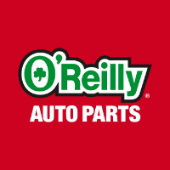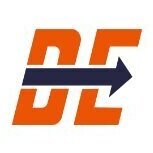-
Welcome to Auto Parts Forum
Whether you are a veteran automotive parts guru or just someone looking for some quick auto parts advice, register today and start a new topic in our forum. Registration is free and you can even sign up with social network platforms such as Facebook, X, and LinkedIn.
Ingersoll Rand W5132 3/8 20v Impact Wrench
-
Similar Content
-
- 0 replies
- 68 views
-
- 0 replies
- 158 views
-
- 0 replies
- 218 views
-
- 0 replies
- 206 views
-
- 0 replies
- 179 views
-
-
Similar Topics
-
By Alex
We are setting up this topic to share information on any impact the current
link hidden, please login to view has on the auto parts industry. Sourcing, distribution, parts availability, and business impact. General questions and sharing of knowledge are welcome. The WHO has designated this a global pandemic that is already affecting many industries, including most sectors in the automotive industry. Corporate and Independent automotive parts stores are being impacted by repair shop businesses slowing down. As you know, many parts come from China and other parts of the world, which are affected by the current pandemic.
Please share how this is impacting you and what you are seeing.
link hidden, please login to view -
By Daysyore
The catalytic converter is a critical component in modern vehicles that plays a crucial role in reducing harmful emissions. This device, typically located in the exhaust system, helps convert toxic pollutants from the engine's exhaust gases into less harmful substances. While catalytic converters have been instrumental in improving air quality and meeting emission standards, they have also become a hot topic of discussion due to their environmental impact, cost, and potential for theft. In this article, we will explore the significance of catalytic converters, their environmental benefits, challenges faced, and potential future developments.
Environmental Benefits:
Catalytic converters have made significant contributions to reducing air pollution and improving overall environmental quality. They primarily work by facilitating chemical reactions that convert harmful pollutants into less harmful compounds. Key environmental benefits include:
1. Emission Reduction: Catalytic converters effectively reduce emissions of harmful pollutants such as carbon monoxide (CO), nitrogen oxides (NOx), and unburned hydrocarbons (HC). These pollutants contribute to smog formation, respiratory issues, and environmental degradation.
2. Compliance with Regulations: Catalytic converters enable vehicles to meet stringent emission regulations imposed by governments worldwide. These regulations aim to mitigate the adverse effects of vehicle emissions on public health and the environment.
Challenges and Concerns:
Despite their environmental benefits, catalytic converters face several challenges and concerns:
1. Precious Metal Usage: Catalytic converters contain precious metals like platinum, palladium, and rhodium, which act as catalysts. The extraction and mining of these metals can have negative environmental impacts, including habitat destruction and water pollution.
2. Cost and Maintenance: Catalytic converters are expensive components, and their replacement or repair can be financially burdensome for vehicle owners. Additionally, improper maintenance or the use of low-quality fuels can lead to premature failure or reduced effectiveness of the catalytic converter.
3. Theft: Catalytic converters contain valuable metals, making them a target for theft. Criminals often remove catalytic converters from vehicles due to their high resale value, leading to inconvenience and financial loss for vehicle owners.
Future Developments:
To address the challenges associated with catalytic converters, ongoing research and development efforts are focused on potential advancements:
1. Alternative Catalyst Materials: Scientists are exploring alternative catalyst materials that can reduce or eliminate the need for precious metals in catalytic converters. This could help mitigate environmental concerns related to metal extraction and lower production costs.
2. Improved Efficiency: Researchers are working on enhancing the efficiency of catalytic converters to further reduce emissions and improve fuel economy. Advancements in catalyst design and optimization of chemical reactions can contribute to more effective pollution control.
3. Anti-Theft Measures: Automotive manufacturers and law enforcement agencies are collaborating to develop anti-theft measures, such as tamper-resistant designs and identification technologies, to deter catalytic converter theft.
Conclusion:
The catalytic converter remains a vital component in the automotive industry's efforts to reduce harmful emissions and improve air quality. While it has made significant environmental contributions, challenges such as precious metal usage, cost, and theft persist. Ongoing research and development endeavors aim to address these concerns through alternative catalyst materials, improved efficiency, and anti-theft measures. As technology advances, striking a balance between environmental impact, automotive performance, and affordability will be crucial in shaping the future of catalytic converters and sustainable transportation.
-
By Counterman
This article, contributed by Tom Cook, is courtesy of link hidden, please login to view
All companies engaged in the global supply chain seek to lower the “landed costs” on their goods in imports and exports sales, purchasing and operations.
While there are numerous components that make up “landed costs,” duties, taxes and tariffs are a huge factor and can often be a detriment to global trade.
Duties, taxes and tariffs are costs borne by the importer as the goods enter a country. These fees are assessed by the country’s local customs authority. In the USA, this is the U.S. Bureau of Customs Border and Protection (CBP).
These fees are determined by what the product is and where it is from. The “what” is known as the HTS (Harmonized Tariff Schedule) and the “where” is the actual origin country of the product.
While some of the guidelines are standardized from one country to another, we must understand that the customs rules and their interoperation often vary differently from one country to another. Sometimes the differences are slight and in other countries the differences are huge.
The importer of record (IOR) has the primary responsibility to determine the correct HTS and origin upon entry of the goods for customs clearance in the country of import.
Most importers utilize the services of freight forwarders, customhouse brokers and/or 3PL’s to provide these clearance services, as well as rely on their expertise to accomplish the clearance process in a successful and compliant manner.
Importers may also obtain the assistance of these service providers in determining the correct HTS classification and
the origin.
Importers are legally responsible to exercise:
• Due Diligence
• Reasonable Care
• Supervision & Control
These standards are the responsibility of the importer of record (IOR). If the IOR outsources the responsibility to a customs broker, under the “supervision & control” standard, the IOR is still responsible for supervising and controlling for the statements and information provided by this third-party on their behalf.
This standard requires the importer to have a working knowledge of the import regulations and be able to properly supervise their outsourced provider.
Customs recognizes that an importer may need guidance in the clearance process. This may be received from CBP, a qualified consultant, a customs attorney or a practitioner that has expertise in customs regulations.
It is critical to understand the steps in managing duties, taxes and tariffs. The first is to understand how the import regulations apply, followed by learning what measures can be taken to mitigate the risk and cost associated with duties, taxes and tariffs. If the origin and the classification are the controlling factors, it is important to understand that this is where the answers lie to mitigation.
For example, Section 301 tariffs on certain goods exported from China into the U.S. may add as much as a 25% surcharge to the import landed cost. This resulted in many companies seeking out alternative sourcing options to avoid this surcharge.
In addressing alternative sourcing options, nearshoring, reshoring and friend shoring – countries such as but not limited to Vietnam, S. Korea, Taiwan, Malaysia – all presented viable options.
In some situations, the acquisition cost may have been higher, but when calculating the landed cost, with the 25% duty eliminated, the comparison demonstrated a viable alternative to the importer.
Companies involved in aftermarket sales, where margins are tight, can benefit from this type of analysis and mitigation strategy.
Another strategy involves the Harmonized Tariff Schedule, or what the product is, from CBP’s perspective.
First, we want to make sure we are utilizing the proper HTS number. It can be possible that the correct HTS number, when changed, will offer a lower duty rate.
Secondly, what we refer to as “Tariff Engineering” is a legitimate manipulation of a product’s design or materials that impacts its classification and potentially lowers the duty rate.
The choice of materials, the functionality of the product, product specifications or qualities all impact how a product is classified.
For example, changing the make-up of the materials utilized in fabrics, such as the mix of cotton, rayon, nylon, etc. will change the classification of a product. Features such as changing the product to be waterproof and adding other qualities may also change the tariff classification and impact the duty rate.
Another example may be how the product is designed; for example, for personal utilization or for commercial application, may have an impact.
How parts and equipment are assembled and utilized can also have an impact on the classification as well as the origin.
The amount of “value-add” in the manufacturing or assembly process can also impact how CBP will view the origin and/or the HTS, therefore directly impacting the duty rates.
Tariff Engineering requires R&D, engineering, and technical support, as well as guidance from trade professionals that can assist in interpreting the import regulations and research prior CBP rulings.
CBP has a great resource called CROSS which is a searchable database of CBP rulings that can be retrieved based on simple or complex search characteristics using keywords and Boolean operators. CROSS has the added functionality of cross-referencing rulings from the initial search result set with their modified, revoked or referenced counterparts.
Rulings collections are separated into Headquarters and New York and span the years 1989 to present. Collections can be searched individually or collectively.
CROSS can be an excellent resource in managing the impact of duties and tariffs on
landed costs.
Duties, taxes and tariffs often emanate from political and economic positions from government offices and agencies. We witnessed this when President Trump put forward the 232 and 301 Tariffs in his first year in office.
China then secured retaliatory duties. We have seen these similar actions in the EU, Australia, Mexico and Canada.
Personnel in the aftermarket engaged in global supply chain purchasing, sales and operations need to pay attention to the political and economic situations in the countries they do business in, as regulations impacting duties and tariffs change frequently with both positive and negative consequences.
Additionally, trade organizations’ lobbying efforts should be followed with the Executive Branch and Congress. These efforts seek to keep open free trade concepts and minimize the utilization of duties and tariffs as political and economic weapons in global affairs.
Studies have been accomplished that clearly demonstrate the negative impact of tariffs on manufacturing, distribution, and trade costs in the global supply chain.
While many tariffs are designed to protect industries or certain markets, they generally wreak havoc in global trade and have negative impacts.
The automobile industry, its suppliers and ancillary industries such as the aftermarket are significantly impacted by duties, taxes and tariffs.
In controlling “landed costs,” duty and tariff mitigation as outlined above are all good strategies, but there are other options that also should be considered:
• Utilization of Foreign Trade Zones
• Consolidating Transportation Providers and Carriers
• Running annual Freight RFP’s
• Choice of INCO Terms
• Alternative Sourcing
• Free Trade Agreements
• Location and methodology in warehousing, fulfillment, and distribution
• Utilization of Technology
• Demand Planning Systems
In summary, developing strategies in tariff mitigation is a viable solution to duty and tariff management and ultimately lowering landed costs and enhancing your company’s competitiveness in both import and export purchasing
and sales.
Thomas Cook is Managing Director of Blue Tiger International, a global consultancy advising on supply chain management, trade compliance, purchasing, trade and disruption management, global business and logistics. For more information, go to www.bluetigerintl.com. Tom can be reached directly at [email protected].
The post
link hidden, please login to view appeared first on link hidden, please login to view.
link hidden, please login to view -
-
By Counterman
Members of the House Energy and Commerce Subcommittee on Innovation, Data and Commerce discussed the REPAIR Act (HR 906) Wednesday on Capitol Hill.
The bipartisan Right to Equitable and Professional Auto Industry Repair (REPAIR) Act would provide consumers with expanded repair options by ensuring that vehicle owners can access repair data and tools needed to repair their vehicles. U.S. Rep. Neal Dunn, a Florida Republican, introduced the REPAIR Act on Feb. 9. Since then, the bill has picked up co-sponsors from both sides of the aisle.
During the hearing, subcommittee ranking member Jan Schakowsky, an Illinois Democrat, said she has heard from many of her constituents about the issue of Right to Repair, and that the owners and repairers should have access to the vehicle data needed to make repairs.
During her opening testimony, Schakowsky also said she is “very much supportive” of the REPAIR Act.
Dunn emphasized that when consumers buy a vehicle, they should own that vehicle, including the right to have it repaired.
“When I buy a product, a house, a motorcycle, an airplane, it belongs to me,” Dunn said during the hearing. “When consumers buy vehicles, the options to repair or service those vehicles [are] being increasingly restricted. … As vehicle data becomes more important to make repairs, it’s unacceptable for the vehicle manufacturers to exclude independent repair shops from accessing that data, especially if they’re the owner.”
He added: “I think forcing auto owners back into dealerships for repairs not only leaves a huge existing industry behind, but it [also] veers toward vertical integration and monopolistic behavior. The REPAIR Act fixes this, just like the hard-working mechanics who fix our cars.”
According to a recent YouGov Survey of 1,000 vehicle owners conducted this summer, a sizable majority of Americans support a federal vehicle right-to-repair law that would prevent automakers from restricting vehicle owners’ repair options.
Americans believe they should be able to decide where and by whom they have their vehicle repaired as well as who has access to their vehicle’s data. They also showed a strong preference for independent repair shops over dealerships. Key results included:
94% want to choose where their vehicle is repaired 93% want to choose who repairs their vehicle 79% are willing to share their vehicle data with independent repair shops 75% support legislation preventing auto manufacturers from restricting consumer access to vehicle data 74% believe vehicle owners should have access to their vehicle data 63% would take their vehicle to an independent repair shop “Momentum continues to grow for the bipartisan REPAIR Act,” CAR Coalition Executive Director Justin Rzepka said. “Lawmakers on both sides of the aisle understand that when it comes to repairing their vehicles, consumers deserve and expect choices. That’s why the REPAIR Act is so critical. Access to vehicle data is essential to both vehicle owners and the independent repair shops who serve them. We thank the members of the subcommittee for bringing attention to the REPAIR Act today. Swift action on the REPAIR and SMART Acts is needed to protect access to affordable car repairs and promote freedom of choice.”
The CAR Coalition, a growing group of companies, associations and insurers involved in the independent automotive aftermarket, praised the subcommittee for putting the REPAIR Act on its agenda.
In written testimony, Auto Care Association member Kathleen Callahan, owner of Xpertech Auto Repair in Englewood, Florida, expressed her support for the legislation.
“The REPAIR Act will guarantee that our shops can access the data we need to safely diagnose and repair vehicles today and in the future in a manner consistent with the wishes of the vehicle owner,” Callahan wrote. “The REPAIR Act allows the free market to work by prohibiting competition-busting barriers vehicle manufacturers use to protect their competitive advantage. If the vehicle owner prefers the service shop at their dealership, that is their right, but should they choose to have repairs done at my shop, they should also have that right guaranteed. It’s your car. It should be your data.”
The post
link hidden, please login to view appeared first on link hidden, please login to view.
link hidden, please login to view
-






Recommended Posts
Join the conversation
You can post now and register later. If you have an account, sign in now to post with your account.
Note: Your post will require moderator approval before it will be visible.